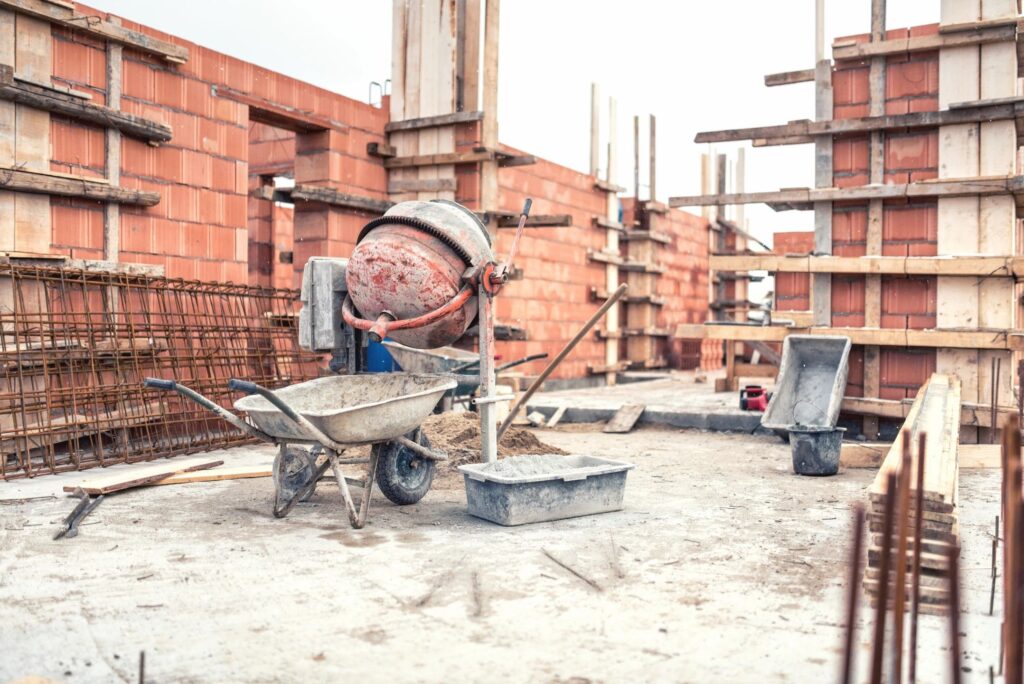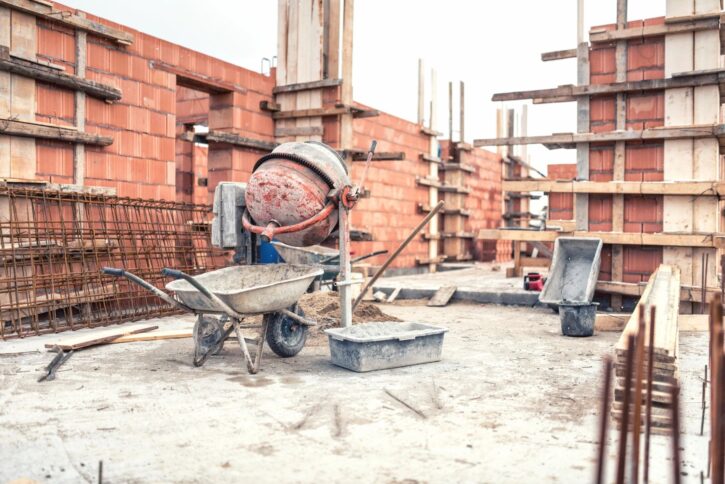
Beyond the Build: The Essential Role of Post-Construction Cleaning and the Hidden Dangers of Dust
When the last nail is hammered and the final coat of paint dries, many believe the construction process is complete. However, a crucial phase often overlooked is post-construction cleaning. This vital step bridges the gap between a finished building and a habitable space, playing a pivotal role in ensuring the health and safety of future occupants. Residential post-construction cleaning is not just about aesthetics; it’s a critical component in creating a safe and healthy living environment.
The Hidden Aftermath of Construction
Construction sites are hubs of activity, generating a surprising array of residues:
- Dust Deluge: Fine particles from materials like drywall, wood, and concrete permeate the air and settle on surfaces.
- Chemical Cocktail: Paints, adhesives, and sealants leave behind volatile organic compounds (VOCs) that can linger for weeks.
- Debris Dilemma: Scraps, packaging, and remnants of building materials often hide in unexpected nooks.
- Invisible Intruders: Mold spores and bacteria can flourish in damp areas overlooked during construction.
Understanding Construction Dust
Construction dust is not a homogeneous substance. It’s a complex mixture of particles varying in size, composition, and potential health impacts:
- Silica Dust: Generated from cutting, grinding, or drilling materials like concrete, mortar, and sandstone. Silica dust is particularly dangerous due to its ability to cause silicosis, a serious lung disease.
- Wood Dust: Produced during cutting, sanding, or shaping wood products. It can cause respiratory irritation and, in some cases, nasal cancer.
- Gypsum Dust: Created when working with drywall. While less toxic than some other types, it can still cause respiratory irritation.
- Metal Dust: From cutting or welding metals. Depending on the metal, this can lead to various health issues, including metal fume fever.
- Insulation Fibers: From materials like fiberglass or mineral wool. These can irritate the skin, eyes, and respiratory system.
The Danger of Fine Particles
The most hazardous aspect of construction dust lies in its smallest components. Particles less than 10 micrometers in diameter (PM10) can penetrate deep into the lungs, while those smaller than 2.5 micrometers (PM2.5) can enter the bloodstream. These fine particles pose several health risks:
- Respiratory Issues: Fine particles can irritate and inflame the airways, exacerbating conditions like asthma and bronchitis. Long-term exposure may lead to decreased lung function and chronic respiratory diseases.
- Cardiovascular Problems: Once in the bloodstream, fine particles can affect the heart and blood vessels, potentially leading to increased blood pressure, irregular heartbeat, and an elevated risk of heart attacks and strokes.
- Systemic Inflammation: The body’s immune response to these foreign particles can lead to systemic inflammation, which is linked to a variety of health issues, including diabetes and autoimmune disorders.
- Cognitive Impacts: Recent research suggests that exposure to fine particles may have neurological effects, potentially contributing to cognitive decline and conditions like dementia.
- Cancer Risk: Some types of construction dust, particularly silica and wood dust, are known carcinogens when inhaled over long periods.
The Persistence of Post-Construction Dust
One of the challenges with post-construction dust is its persistence. Even after visible dust has been cleaned, fine particles can remain:
- Airborne Longevity: The smallest particles can stay suspended in the air for hours or even days after construction activities have ceased.
- Surface Adhesion: Dust can adhere to surfaces, especially porous materials like fabrics and unfinished wood, making it difficult to remove completely.
- Hidden Accumulation: Dust can settle in hard-to-reach areas like air ducts, light fixtures, and behind appliances, continuing to affect air quality long after construction is complete.
- Electrostatic Attraction: Some materials can become electrostatically charged, attracting and holding onto fine dust particles more tenaciously.
Vulnerable Populations
While dust and fine particles can affect anyone, certain groups are particularly vulnerable to their effects:
- Children: With developing respiratory systems and higher breathing rates relative to their body size, children are more susceptible to the effects of fine particles.
- Elderly Individuals: Aging lungs and potentially compromised immune systems make older adults more vulnerable to respiratory irritants.
- People with Pre-existing Conditions: Those with asthma, COPD, heart disease, or compromised immune systems face higher risks from exposure to construction dust.
- Pregnant Women: Exposure to fine particles during pregnancy has been linked to adverse birth outcomes, including low birth weight and preterm birth.
Why Thorough Cleaning Matters
The importance of comprehensive post-construction cleaning extends far beyond aesthetics:
- Respiratory Relief: Removing fine particles helps prevent irritation of airways and potential long-term lung issues.
- Allergy Alleviation: Eliminating dust and potential allergens creates a more comfortable environment for sensitive individuals.
- Chemical Clearance: Proper cleaning techniques can significantly reduce the presence of harmful VOCs.
- Mold Mitigation: Addressing hidden moisture prevents the growth and spread of potentially toxic mold.
- Surface Preservation: Removing abrasive construction dust protects finishes and extends the life of new surfaces.
The Post-Construction Cleaning Process
A systematic approach ensures no corner is left untouched:
- Rough Clean:
- Remove large debris and leftover materials
- Sweep and vacuum accessible areas
- Detail Work:
- Wipe down all surfaces, including often-forgotten spots like light fixtures and window tracks
- Use appropriate cleaning solutions for different materials (wood, glass, metal, etc.)
- Deep Clean:
- Employ HEPA filter vacuums to capture fine particles
- Steam clean carpets and upholstery
- Sanitize high-touch areas
- Air System Attention:
- Clean or replace HVAC filters
- Consider professional duct cleaning
- Final Touches:
- Address any lingering odors
- Perform a final inspection and touch-up
Specialized Techniques for Tough Challenges
Some post-construction cleaning tasks require unique approaches:
- Pressure Washing: Ideal for exterior surfaces and stubborn stains.
- Dry Ice Blasting: Effectively removes residues without introducing moisture.
- Electrostatic Spraying: Ensures even application of disinfectants on complex surfaces.
- HEPA Filtration: Captures microscopic particles, improving indoor air quality.
The Professional Advantage
While some may attempt post-construction cleaning themselves, professional services offer distinct benefits:
- Expertise: Trained to identify and address construction-specific cleaning challenges.
- Equipment: Access to industrial-grade tools and cleaning solutions.
- Efficiency: Complete thorough cleaning in less time.
- Safety: Knowledgeable about handling potentially hazardous materials.
- Comprehensive Approach: Ensures no area is overlooked.
Green Cleaning Considerations
Environmentally-conscious cleaning practices can further enhance the space:
- Eco-Friendly Products: Use non-toxic, biodegradable cleaning solutions.
- Microfiber Magic: Employ reusable microfiber cloths to reduce waste.
- Water Conservation: Utilize low-moisture cleaning methods where possible.
- Proper Disposal: Ensure responsible disposal of cleaning waste and any hazardous materials.
Maintaining the Clean
Post-construction cleaning sets the stage for ongoing cleanliness:
- Regular Upkeep: Implement a thorough cleaning schedule in the weeks following construction.
- Air Quality Monitoring: Consider using air quality sensors to track improvements over time.
- Ventilation Vigilance: Ensure proper air circulation to dispel any lingering odors or VOCs.
- Occupant Education: Provide guidelines for maintaining the newly cleaned space.
Long-Term Exposure Concerns
While acute exposure to construction dust during the building process is a primary concern, long-term exposure to residual dust and particles in poorly cleaned post-construction environments can lead to chronic health issues:
- Cumulative Lung Damage: Repeated exposure to fine particles can cause progressive and irreversible lung damage over time.
- Sensitization: Prolonged exposure to certain types of dust can lead to the development of allergies or chemical sensitivities.
- Chronic Inflammation: Ongoing exposure to irritants can result in chronic inflammation throughout the body, contributing to various health problems.
- Increased Susceptibility: Long-term exposure may weaken the respiratory system, making individuals more susceptible to other airborne pollutants and pathogens.
Technological Advances in Dust Management
Recent innovations are improving our ability to manage construction dust and fine particles:
- Real-time Particulate Monitoring: Devices that provide continuous monitoring of air quality during and after construction, allowing for immediate intervention if particle levels become dangerous.
- Advanced Filtration Systems: Development of more efficient filtration technologies capable of capturing ultra-fine particles.
- Dust Suppression Techniques: New methods for suppressing dust at the source during construction, such as water misting systems and dust-binding agents.
- Smart Cleaning Tools: Robotic vacuums and mops equipped with sensors to detect and target areas with high dust concentrations.
- Nanocoatings: Development of surface coatings that repel dust and make cleaning more effective.
Conclusion
Residential post-construction cleaning is far from being an afterthought; it is a critical phase in creating safe, healthy, and truly complete buildings. It transforms a raw, newly-built space into a welcoming environment ready for occupancy. By investing in thorough cleaning after construction, property owners not only protect the health of future occupants but also preserve the integrity and longevity of their new or renovated spaces.








Thank you for sharing this important information